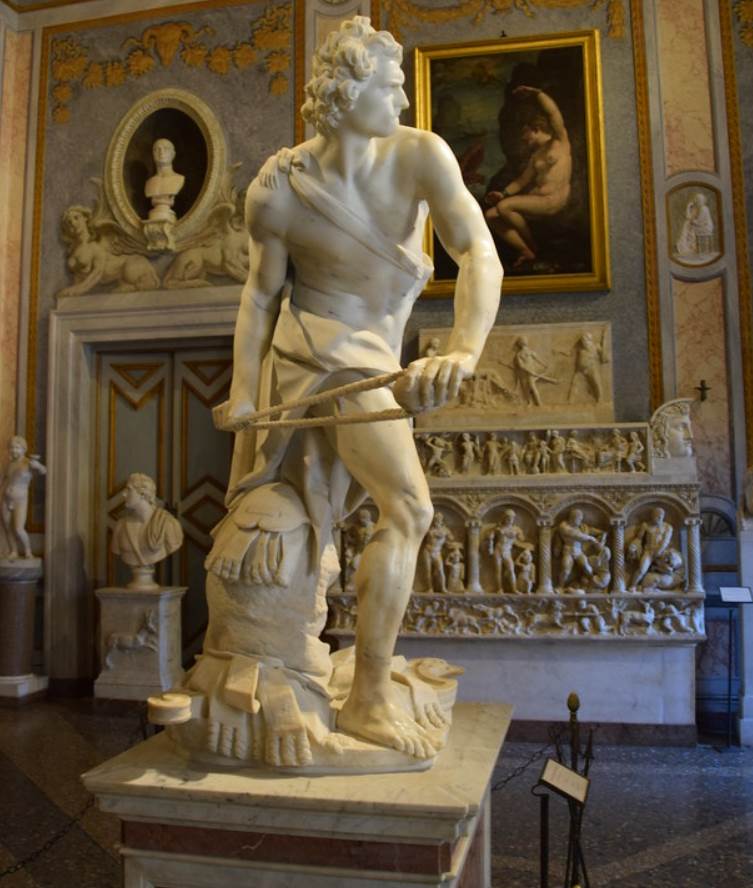Various renowned sculptors over the centuries have depicted one of the most popular Biblical heroes, David. The Statue of David (1501-1504) created by Michelangelo is definitely the most famous one, but Donatello also created a Statue of David (1440s) that caused quite a stir.
These magnificent sculptures created in the early 16th and 15th centuries respectively were followed by an equally impressive work by Gian Lorenzo Bernini (1598-1680). He is considered to be the leading Baroque sculptor of the 17th century.
In this article, we’ll take a closer look at some of the most interesting facts about David by Bernini, a fascinating work of art completed during the early phase of his career.
1. It was completed when the artist was still in his 20s
Gian Lorenzo Bernini dominated sculpture during the 17th century. He left his permanent mark on the city of Rome by designing St. Peter’s Square and creating multiple works for the interior of St. Peter’s Basilica (of which he was the leading architect at the time).
He also created numerous sculptural fountains that still decorate the amazing squares of Rome today.
He is most famously known for his sculptures and many of his most famous works date back to the early phase of his career, including this masterpiece that was completed in just 7 months between 1623 and 1624. This means that he was just 24 years old when he completed this statue.
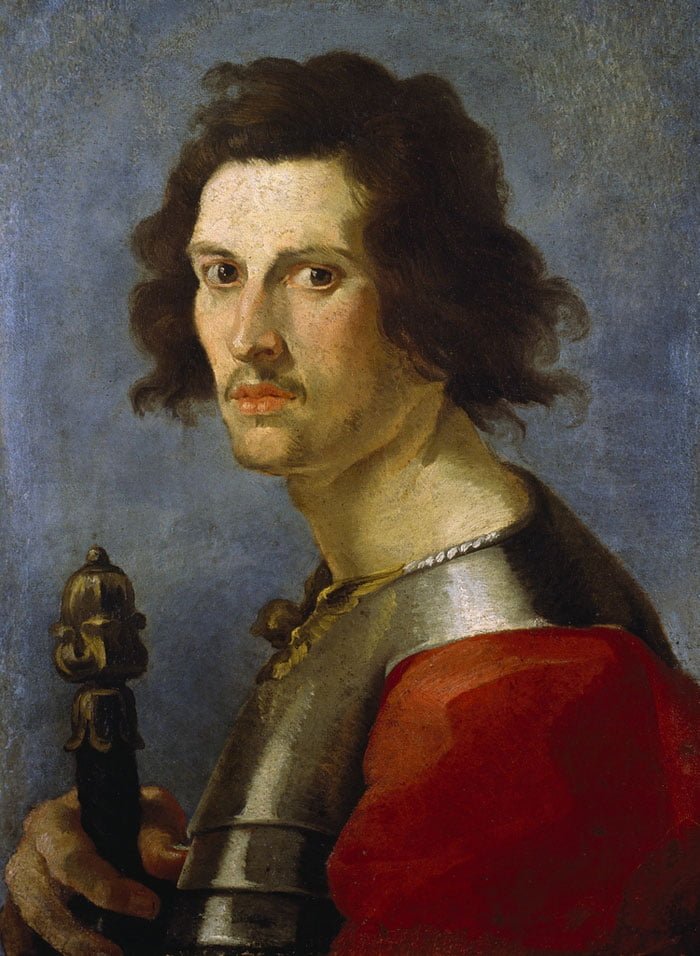
2. It was the final commission from a wealthy Roman Cardinal
During this initial phase of his career, he was lucky enough to have been noticed by Cardinal Scipione Borghese, the rich nephew, and secretary of Pope Paul V.
This man amassed great wealth during this period in the early 17th century and not only built the Villa Borghese in the immense Borghese Garden but also collected and commissioned various works of art.
The statue of David was the final work that he commissioned from a series of sculptures created by Bernini during this period, all intended to decorate his newly constructed Villa.
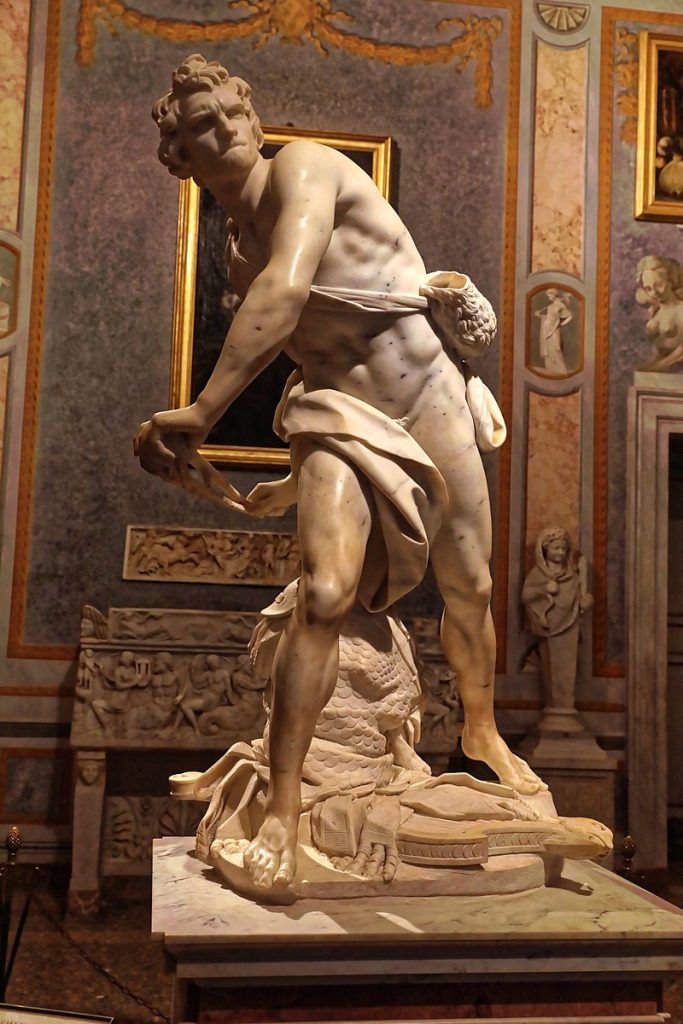
3. It depicts a popular hero from the Old Testament
Just like the other statues of David, it depicts the Biblical hero from the Old Testament. In this story, the Israelites are at war with the Philistines and the battle is about to be decided with man-on-man combat.
The Philistines send out their greatest warrior, a giant named Goliath, while the Israelites choose a shepherd named David. The battle is decided as David knocks down Goliath by slinging a stone onto his forehead.
4. It was a revolutionary sculpture because of the way he is depicted
While most statues of this subject depict David as he stands victorious over the decapitated head of the giant, Bernini chose to depict the moment that David actually swings the stone at the giant’s head.
This sense of involvement in the space surrounding him was pretty much unseen since antiquity until Bernini completed this work. Especially the depicted motion of a man throwing a stone was revolutionary at the time.
Bernini likely got his inspiration for this work from a statue that was uncovered not too much earlier in a palace built by Nero called the “Borghese Gladiator.”
This statue dates back to around 100 B.C. and it’s referred to as such because it quickly decorated a room named after it at the Villa Borghese where Bernini must have seen it. The striking motion of the ancient warrior is virtually identical to the swinging motion of David.
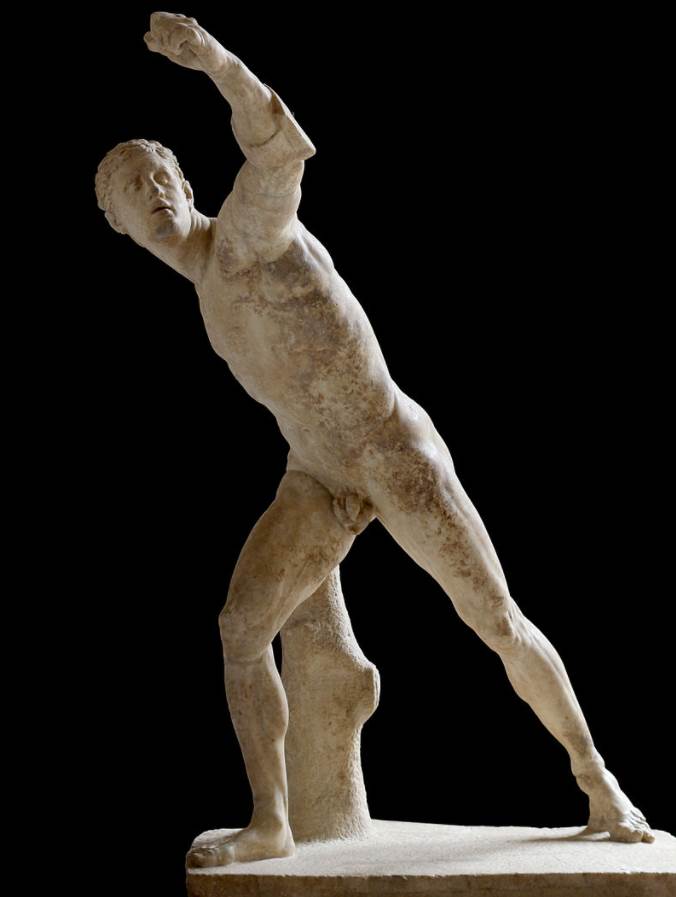
5. It still resides in the same location as to was commissioned for
Just like the Borghese Gladiator, the statue of David by Bernini decorated the Villa Borghese upon completion. This also means that the statue never left its original location because it’s still part of this collection.
The statue can be admired at the villa which is now called the “Galleria Borghese” along with multiple other fine works of art, including several of Gian Lorenzo Bernini himself.
Other famous works in the collection are “Sacred and Profane Love” by Titian, “Venus Victrix” by Antonio Canova, and “The Deposition” by Raphael. These are just a few of the fascinating artworks in this amazing museum just north of the historical heart of Rome.
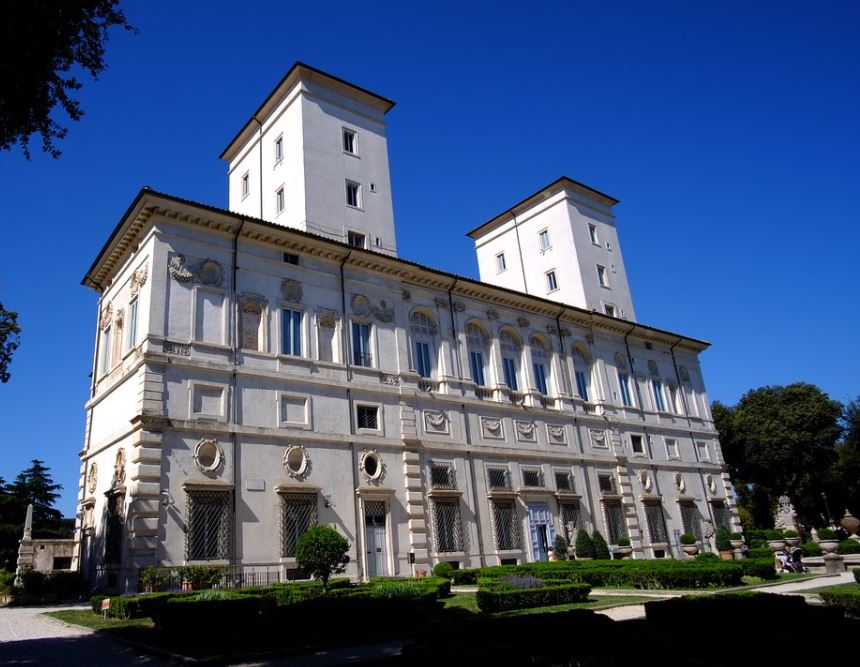
More interesting facts about David By Bernini
6. Even though the work was the final one to be commissioned by Cardinal Scipione Borghese, it wasn’t the last work that Bernini completed during this period.
For some unknown reason, he changed his focus to this sculpture and temporarily paused “Apollo and Daphne,” a sculpture he had started in 1622. He eventually completed David in 7 months and completed the other sculpture in 1625.
7. A couple of objects can be seen lying at the feet of David. One of these includes the armor that he was given by the army which actually belonged to King Saul. he didn’t need it because he didn’t intend to actually fight the giant.
The other object we can see is a harp, a musical instrument included because it’s associated with David, a man described in the Bible as a renowned harpist.
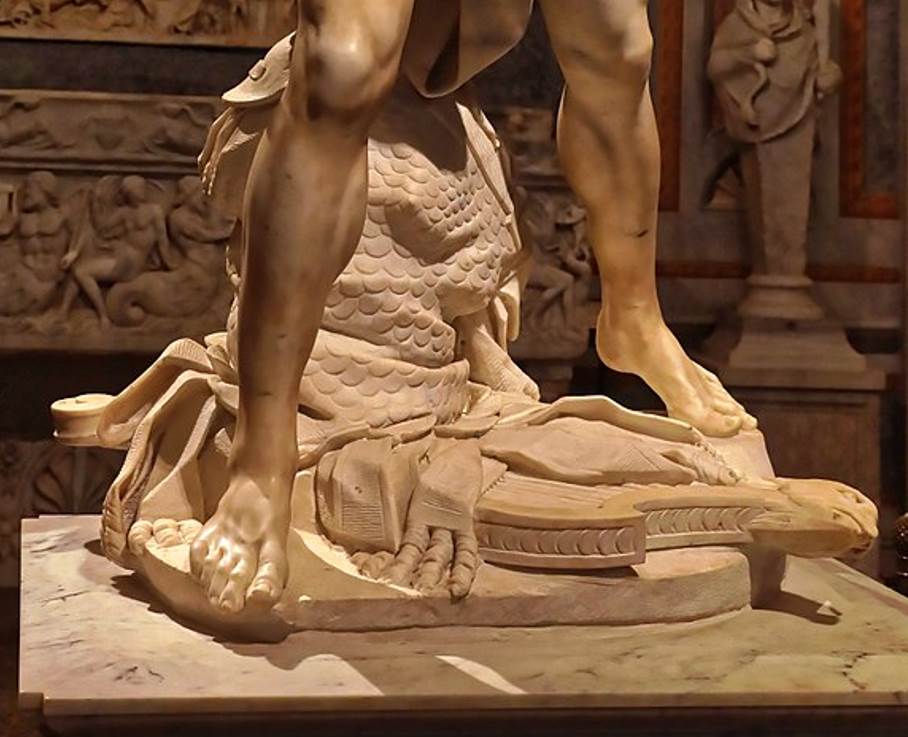
8. Even though there isn’t any proof of it, it’s possible that Bernini read the description made by Leonardo da Vinci in his “Treatise of Painting.” In this manuscript he explains exactly how a throwing figure should be depicted:
If you represent him beginning the motion, then the inner side of the outstretched foot will be in line with the chest, and will bring the opposite shoulder over the foot on which his weight rests. That is: the right foot will be under his weight, and the left shoulder will be above the tip of the right foot.
9. Apart from the fact that a throwing figure wasn’t seen in sculpture since antiquity, the psychological intensity that Bernini depicted in this sculpture was something unique as well.
The anger, aggression, and fascinating concentration on the face of David are psychological elements that would end up defining the career of the artist. This is why he eventually became the leading artist of the Baroque and revolutionized sculpture during his time.
10. Most of the sculptures created by Gian Lorenzo Bernini for his patron Cardinal Scipione Borghese ended up being placed right in the center of a particular room. That’s because they were sculpted in such a way that they can be viewed from multiple angles.
This was another revolutionary element that completely moved away from sculptures created by artists of the renaissance, which were only intended to be viewed from one side.
